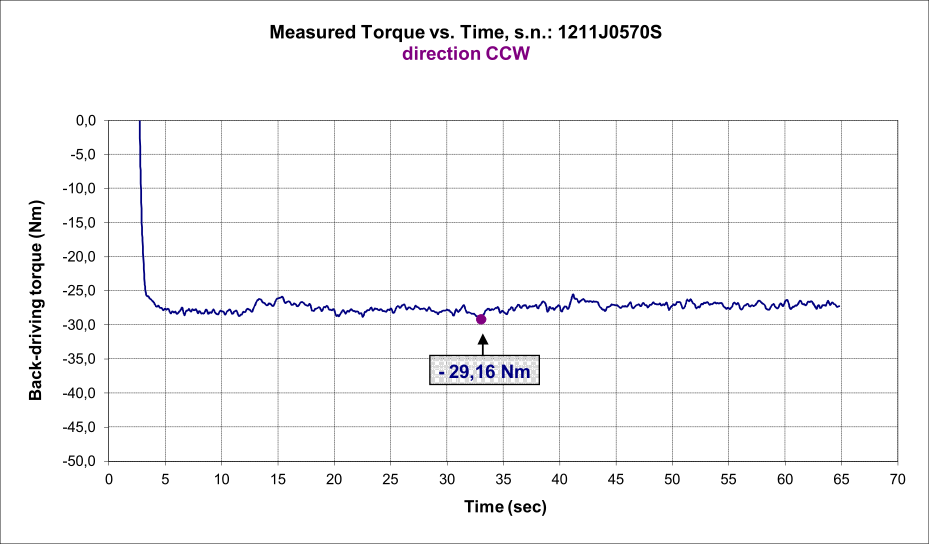
Gone are the times when doctors carried all the medical tools with themselves in one bag. Nowadays, health care equipment is a mixture of the latest technology from the fields of physics, electronics, software, and mechanics. Modern scanning and imagining devices allow physicians to diagnose and to see inside of their patients in ways unimaginable just 50 years ago and a growing number of various mechatronic and robotic devices help to perform surgery and other medical treatments. All these marvelous health care devices must fulfill strict requirements from safety, but also the reliability point of view, with some types of machines, also requiring precision movement and positioning, without compromising the former. TwinSpin® gearboxes are used in various medical applications and in the following lines we would like to outline the benefits provided by our gear technology.
Robust design and overload capacity
As mentioned earlier, the safety of the patient and health care staff is one of the most important features of a medical device. Any potential risk of injury or accident must be prevented at any cost, therefore for this reason critical components on the rotating axis with close proximity to the human or which are moving patient, must be robust and designed for very high overload. Overload factor 6 times of nominal load and even more is required and tested.
TwinSpin® reduction gear withstands several thousand load peaks at 5x times of rated torque without loss of function or precision. To find the gearbox structural limit we tested G series reduction gear, size TS 115 ratio 43 with static torque overload. The Rated torque of the gearbox is 173 Nm and the emergency torque of 5x is 865 Nm. With the applied sensor we loaded the output shaft of the gear and checked for hysteresis curve discontinuity which occurred at 2 700 Nm of load torque. In the next step, we tested the main bearing with tilting moment overload. The maximum bending moment of TS 115 is 560 Nm, so as with torque overload we applied tilting moment overload. The loading went up to 3200 Nm of tilting moment when plastic deformation of bolts started to be visible and the test was interrupted.
The important observation from both overload tests was that the reduction gear did not disintegrate into separate parts and have kept the internal components together. That means, when a very high safety factor is required, instead of using oversized components which do not have high overload capacity, TwinSpin® reduction gear can be used.
The next important parameter of the reduction gear used for medical applications is its smooth movement without high vibrations and low noise production. TwinSpin® high precision gearboxes are single-stage reduction gears and in standard, solid shaft version no additional pre-stage is used. In the hollow shaft version, either a spur gear pre-stage or a timing belt with pulley are used. To secure a smooth movement of the output, low torsional vibrations are desirable. Vibration amplitude depends on the size of the gearbox, the quality of machined components, but to some degree, it also depends on the type of the reduction principle. In general, TwinSpin® reduction gears have low torsional vibrations. In the picture below there is an example of torsional vibration measurement. Amplitude is evaluated in micrometers and with maximum input speed up to 1500 rpm. The picture shows the measurement of torsional vibration of hollow shaft gearbox size TS 115 GH, ratio 123.
Picture 1
Smooth and vibration-free movement is required in imagining and scanning devices where the resulting picture of scanned body parts must be sharp and focused.
High output torque in small diameter
In devices where design space is constrained (and the medical applications often are the case), high output torque
in a compact design envelope is appreciated. If we consider reducers up to a diameter of 120mm, SPINEA® offers a broad portfolio of solid and hollow shaft solutions. Big hollow diameter in combination with high rated torque values of GH series reduction gears provides a potential for compact and reliable medical machine solutions.
The lower ratio for low back-driving torque and high efficiency
In some applications where various parts of the machine need positioning with hand, lower ratios with low values of back-driving torque can be interesting. Of course, back-driving torque magnitude depends on more factors than is the ratio, but the ratio is the main one in the TwinSpin® gearbox. The next picture demonstrates the measurement of back-driving torque of size TS 125 GH with a ratio of 49. The Rated torque of TS 125 GH is 180 Nm and acceleration torque is 450 Nm. The gearbox is fully sealed.
Picture 2
Each medical application has different requirements put on motion equipment it uses. On the previous lines, we wanted to point out a few technical features of TwinSpin® reduction gears, which may be interesting for designers of medical equipment.
If you wish to know more about our high precision reduction gears TwinSpin® or should you have a question concerning their performance, modification, or optimization of our gearbox for your medical application, please get in touch with our sales department.


 SK
SK DE
DE IT
IT RU
RU CN
CN





































